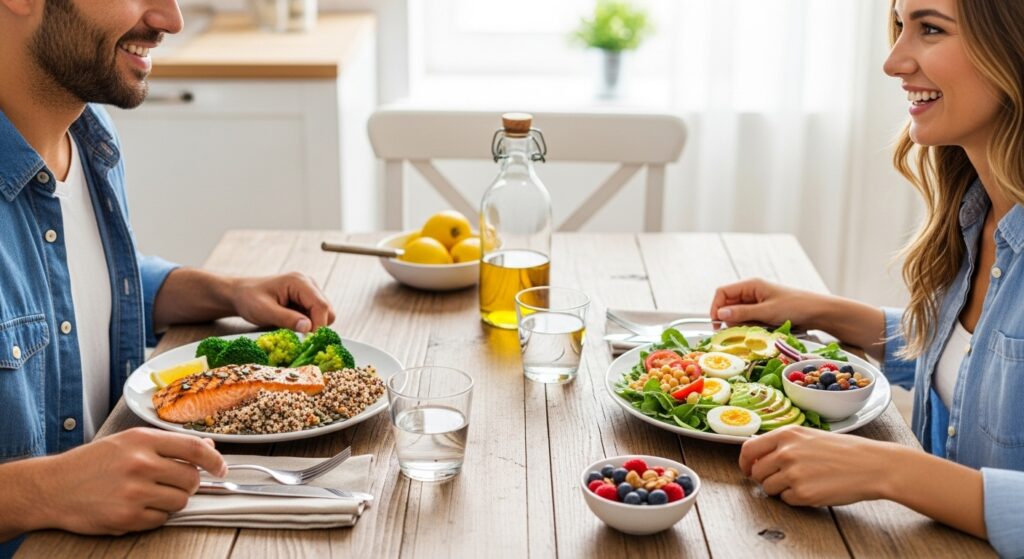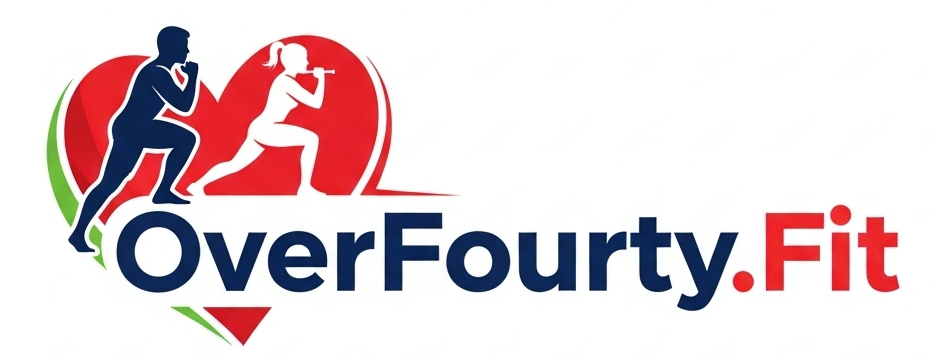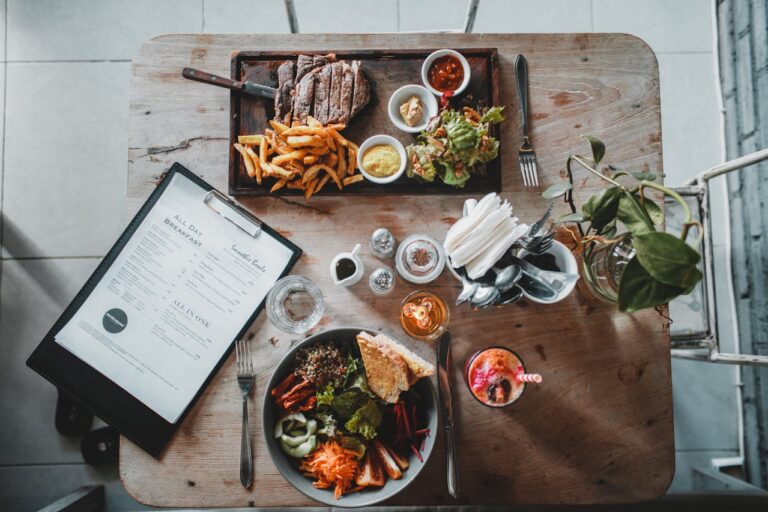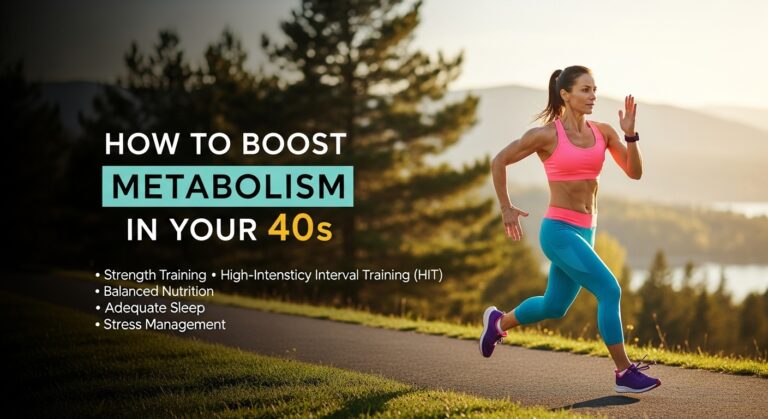Healthy Eating After 40: Simple Habits That Make a Big Difference
Once you reach your 40s, your metabolism slows, hormone levels shift, and your nutritional needs change. The same diet that worked well in your 20s may not support your health and energy now.
The good news is that eating sustainably can help you feel energized. It can also help you keep a healthy weight and protect against health problems as you age.
Why Diet Matters More After 40
- Slower Metabolism: You burn fewer calories at rest, making food quality more important.
- Muscle Mass Decline: Getting enough protein helps preserve lean muscle.
- Hormonal Changes: Nutrient-rich foods can naturally support hormone balance.
- Bone Health: Calcium and vitamin D play a key role in preventing bone loss.
- Heart Health: A balanced diet helps manage cholesterol and blood pressure.

Top Healthy Eating Habits for Over 40
1. Prioritize Protein at Every Meal
Protein supports muscle maintenance, boosts metabolism, and keeps you feeling full.
Examples: eggs, lean meats, fish, Greek yogurt, lentils, tofu.
Tip: Aim for 20–30 grams per meal.
2. Choose High-Fiber Foods
Fiber aids digestion, helps control blood sugar, and supports weight management.
Examples: vegetables, fruits, legumes, whole grains.
Tip: Fill half your plate with vegetables at lunch and dinner.
3. Watch Portion Sizes
Even healthy foods can contribute to weight gain if eaten in large amounts.
Tip: Use smaller plates and practice mindful eating.
4. Stay Hydrated
Dehydration can lead to fatigue, brain fog, and joint stiffness.
Tip: Drink 8–10 cups of water daily, more if you are active.
5. Limit Added Sugars
Too much sugar raises cholesterol, increases belly fat, and causes energy crashes.
Watch out for: sodas, sweets, flavored yogurts, and packaged snacks.
Tip: Choose fruit or a small piece of dark chocolate to satisfy cravings.
6. Eat Healthy Fats Daily
Healthy fats support brain health, hormone production, and nutrient absorption.
Examples: avocado, olive oil, nuts, fatty fish.
Tip: Cook with extra virgin olive oil instead of butter.
7. Time Your Meals Wisely
Eating late at night may disrupt digestion and sleep.
Tip: Finish your last meal at least two to three hours before bed.
8. Plan and Prep Your Meals
Meal prep reduces the chances of unhealthy last-minute choices.
Tip: Cook proteins in batches, pre-cut vegetables, and keep balanced meals ready to go.

Sample One-Day Healthy Eating Plan for Over 40
- Breakfast: Greek yogurt with berries and chia seeds
- Snack: A handful of almonds with an apple
- Lunch: Grilled chicken salad with olive oil dressing
- Snack: Carrot sticks with hummus
- Dinner: Baked salmon with steamed broccoli and quinoa
Common Eating Mistakes to Avoid After 40
- Skipping breakfast, which often leads to overeating later
- Eating meals that are too low in protein
- Drinking calories from juice, soda, or creamy coffees
- Relying on processed “diet” foods instead of whole foods
Benefits You’ll Notice Within Weeks
- Steadier energy throughout the day
- Easier weight control without extreme dieting
- Better digestion and gut health
- Clearer skin and less bloating
Final Thoughts: Healthy Eating Habits for Over 40
Healthy eating after 40 isn’t about strict restriction. It’s about making smarter, intentional food choices that support your changing body. Eating healthy foods is important.
Control your portion sizes. Be consistent with your eating habits. This will give your body energy.
It will also support your long-term health.
FAQs about Healthy Eating Habits for Over 40
What is the healthiest diet for over 40?
The healthiest diet for people over 40 is one that is balanced, nutrient-dense, and supports changing metabolism and hormone levels. Focus on lean proteins, high-fiber foods, healthy fats, and plenty of fruits and vegetables. Whole grains, legumes, and calcium-rich foods (like dairy or fortified alternatives) help support bone and heart health. Limiting processed foods, added sugars, and excess sodium is also key.
Is it too late to start eating healthy at 40?
It is never too late to start eating healthy, even at 40 or beyond. Research shows that making dietary improvements at midlife can lower the risk of heart disease, diabetes, obesity, and osteoporosis. Small, consistent changes such as eating more whole foods, reducing sugar, and staying hydrated can bring noticeable improvements in energy, digestion, and weight management within weeks.
How much food should a 40 year old eat?
The amount of food a 40-year-old should eat depends on gender, activity level, and overall health goals. On average:
Women in their 40s typically need 1,800–2,200 calories per day
Men in their 40s typically need 2,200–2,800 calories per day
Active individuals may require more, while those who are sedentary may need fewer. Portion control and focusing on nutrient-rich foods are more important than strict calorie counting.
What is the 3-3-3 rule for weight loss?
The 3-3-3 rule for weight loss is a simple guideline that suggests walking three miles, drinking three liters of water, and performing three strength-training exercises each day. While not a medical standard, it encourages consistent movement, hydration, and strength training, which are all effective habits for managing weight after 40. For best results, combine it with a balanced diet tailored to your needs.







